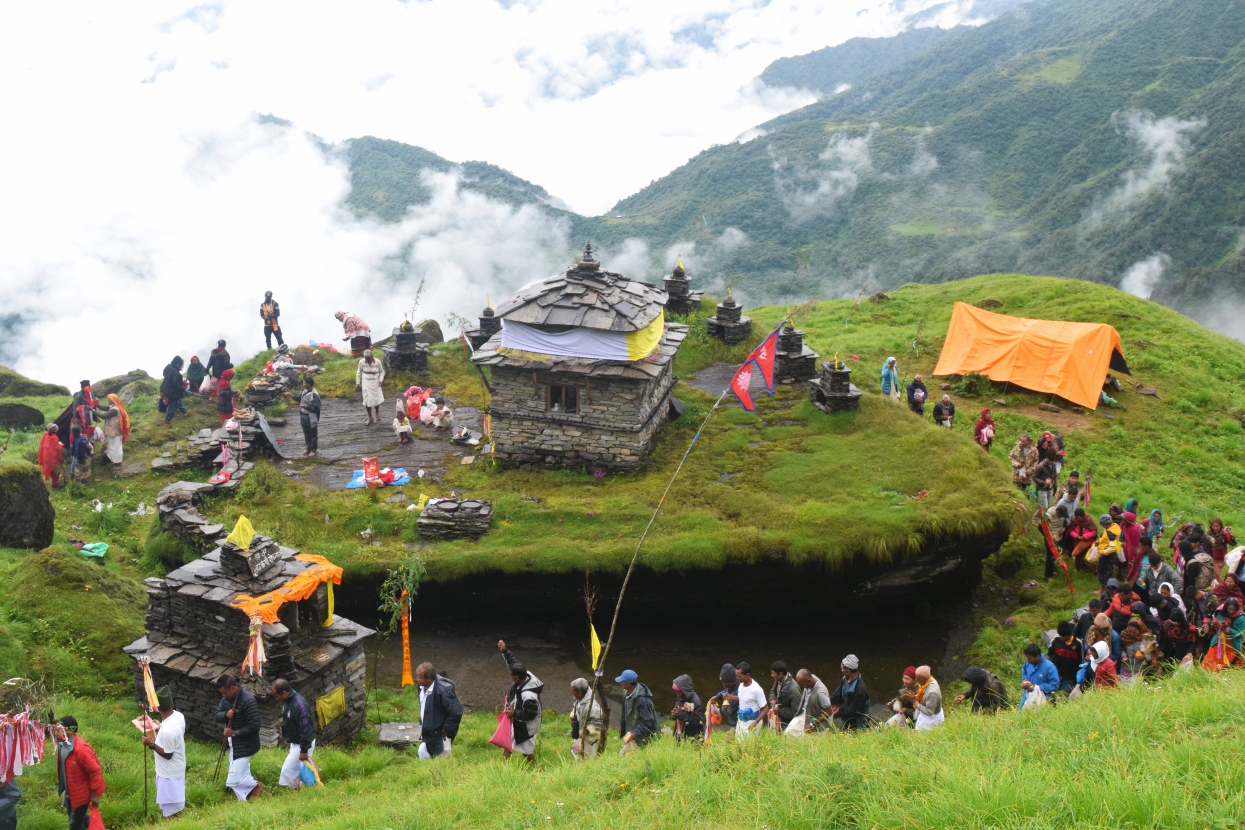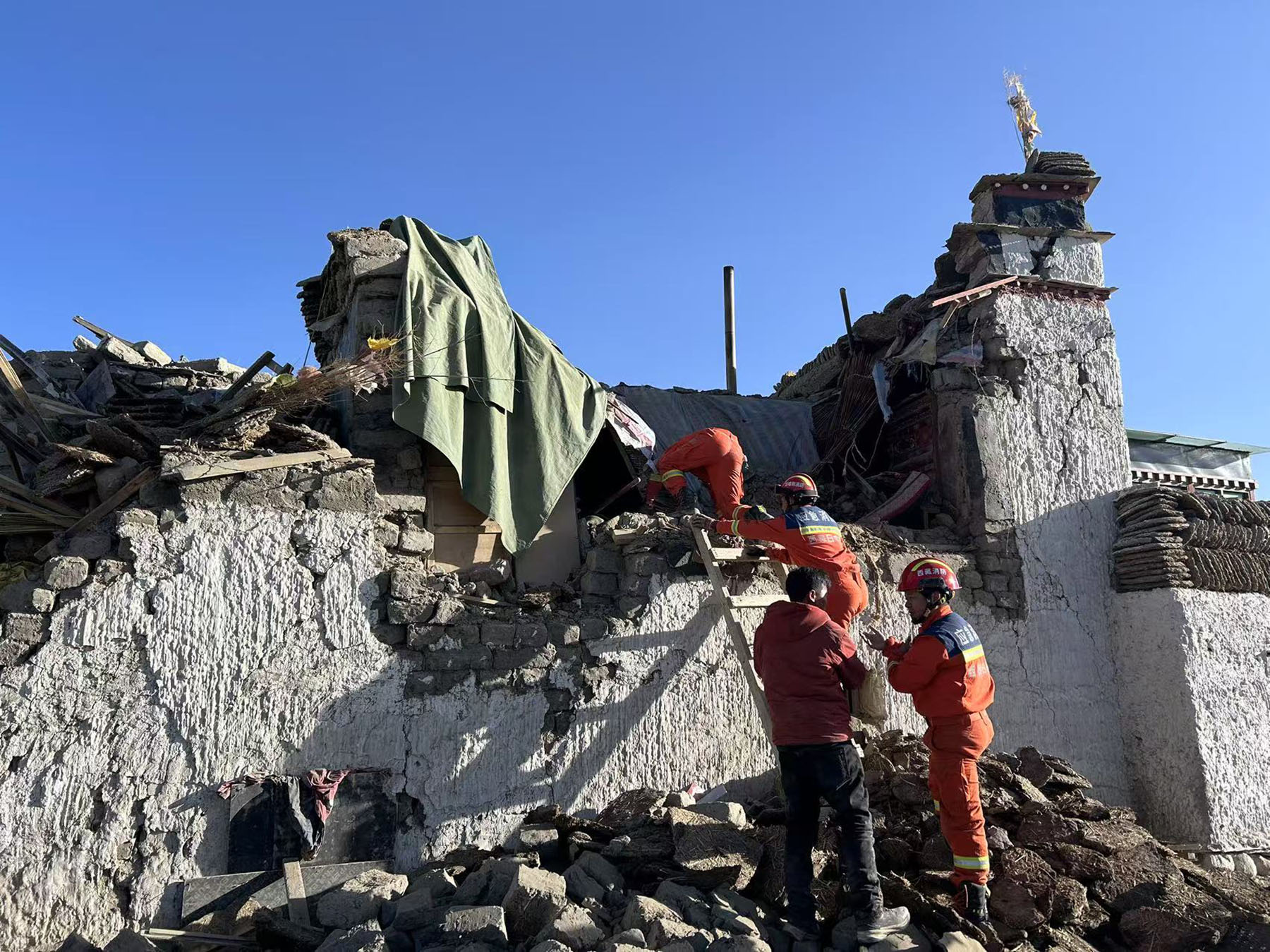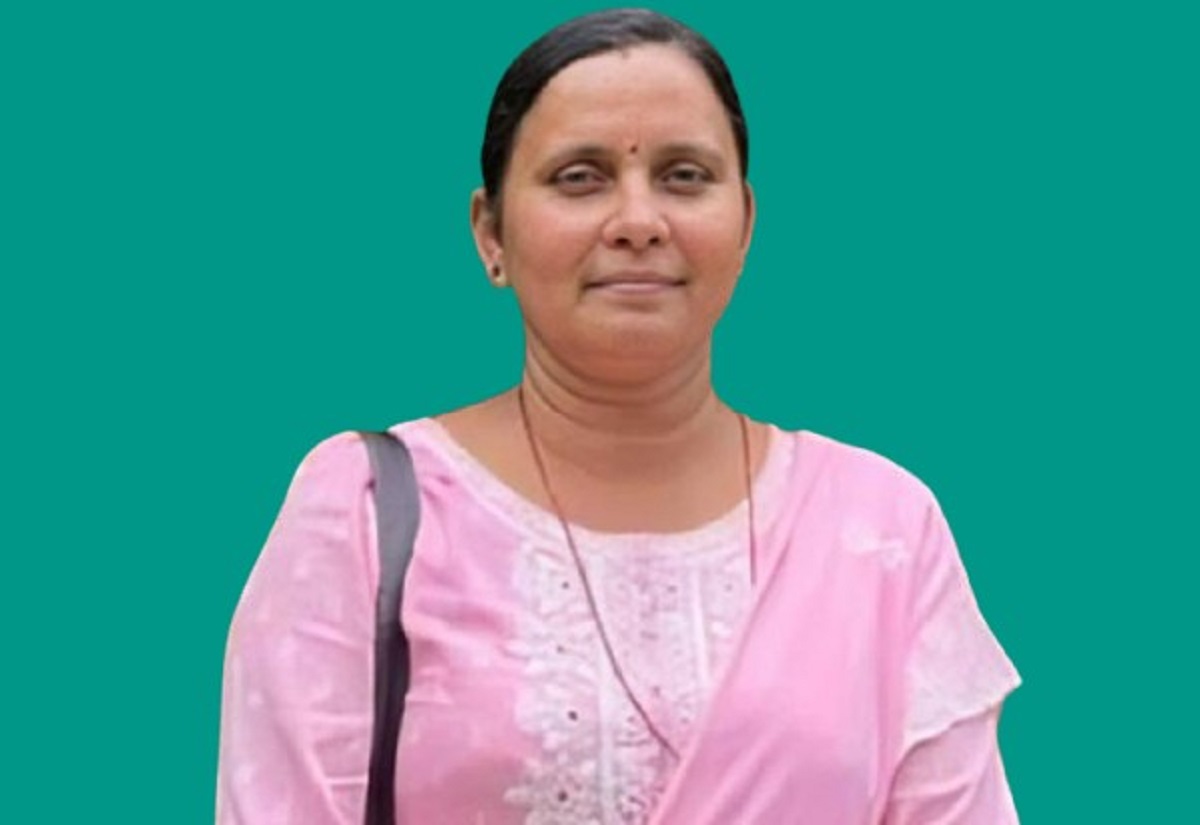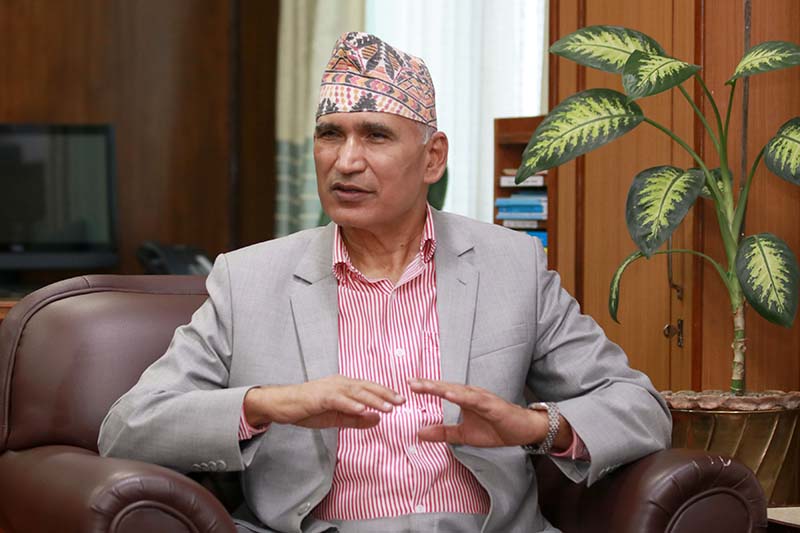Rikhar: A Hidden Gem Combining Spiritual Significance and Natural Beauty
Located in the Raghu Ganga Municipality-8, Kuinemangle of Myagdi district, Rikhar is rich in historical, religious, and tourism potential.

KATHMANDU: Nestled amidst towering peaks and surrounded by lush greenery, Rikhar is a picturesque site with a temple adorned with an array of local flowers.
The temple, set on a boat-shaped rock in a small pond, is both captivating and unique.
Located in the Raghu Ganga Municipality-8, Kuinemangle of Myagdi district, Rikhar is rich in historical, religious, and tourism potential.
The site is situated at an altitude of 4,010 meters in the embrace of the Dhaulagiri Himal, making it a notable religious site.
Rikhark’s landscape is lush with medicinal plants such as Yarsagumba, Ketuki, Bahambed, Paanchaule, Shilajit, Satuwa, Nirmasi Jatamasi, and Chiraito.
The main attraction here is the temple built on a boat-shaped rock in the pond. Other temples have also been constructed in the area through the efforts of devotees and locals.
From Myagdi’s district headquarters, Beni, one can reach Rikhark by a two-day journey through Galeshwar, the municipality center Mauwa Phat, Dagnam, Darmija, Chimkhola, Ghyasikharka, Duwadi, and Patlekarka.
The Rikhar area, with its smiling mountain peaks and vibrant greenery, is known as a famous meditation site of the sage Rishi.
According to Rikhar Conservation Committee Chairman Chitra Chhantyal, the temple sees significant worship and activities from Baisakh to Asoj due to its high Himalayan location.
Special worship ceremonies are held at Rikhar Temple on the day of Rishitarpani, also known as Janai Purnima.
Chhantyal noted that in recent years, due to increased publicity, the area has seen a surge in visitors from outside the district.
Believers come to Rikhar with the faith that prayers and offerings here fulfill their wishes. Devotees from Myagdi, as well as from areas like Parbat, Baglung, Kaski, Nawalparasi, and Kathmandu, visit the site.
The scenic beauty of Rikhar, after traversing challenging and remote terrain, captivates visitors.
Damodar Sharma from Beni, who visited Rikhark for the first time, expressed that if promotion and infrastructure development are achieved, Rikhar could become a premier religious and tourist destination. He was particularly impressed by the views from Rikhar.
Chhantyal also highlighted a unique feature of the temple’s premises—a copper pot in the shape of a dam that never runs out of water.
Despite no external water sources being added, the pot remains perpetually full.
Devotees often take the water from this pot as holy water, and it never empties.
According to a mythical story, during a cataclysmic flood, King Satyabrata took refuge on a boat with the Saptarishis (seven sages), important medicinal herbs, and his protection. Over time, they are believed to have rested in this area.
The stone on which the temple is built is considered a relic from the era of the flood, and the area is believed to be the meditation site of the Saptarishis, covered with snow and adorned with thousands of flowers, giving rise to the legend of Rikhar.
Rikhark is not only religiously significant but also holds great tourism potential due to its natural beauty.
Ankit Pun, patron of the Saptarishi Youth Club, emphasized that the stunning mountains, colorful wildflowers, green hills, and clear waterfalls make it a compelling destination for trekkers.
To enhance its religious and tourism appeal, locals have established the Rikhar Conservation Committee to work on its development and promotion.
With the support of local leaders, devotees, and the community, infrastructures such as pilgrimage guesthouses, bridges, and footpaths have been constructed along the route to Rikhar.
Local government efforts, particularly by the Raghu Ganga Municipality and Ward No. 8 Office, focus on promoting Rikhar as a religious and tourist site through publicity and infrastructure development.
Increased involvement from government bodies, conservation committees, local women’s groups, and youth clubs is evident.
According to Pun, identifying the area’s potential and problems, and developing both long-term and immediate infrastructure plans, are key focuses.
By developing trekking routes, cable bridges over rivers, and sufficient accommodation facilities, and linking Rikhark to the Dhaulagiri base camp with a well-managed route, there is potential to attract more religious tourists.
Chhantyal, head of the Rikhark Conservation Committee, believes that the development of religious and tourism infrastructure in Rikhar will significantly contribute to the economic development and prosperity of the entire Raghu Ganga Municipality.
The unique culture and art of the Chhantyal community could also enhance the area’s appeal to tourists.









